Let’s dive deep into the heart of Italy… but let’s skip the usual tourist traps in favor of something a little more unusual. This article is your personal guide to the 13 Weirdest Places to Visit in Italy, spots where the word ‘ordinary’ doesn’t apply, but ‘extraordinary’ might just be an understatement.
Crafting this list was no small feat. We scoured map corners, delved into local legends, and even chatted with the most eccentric of locals to bring you places that are as bewildering as they are captivating.
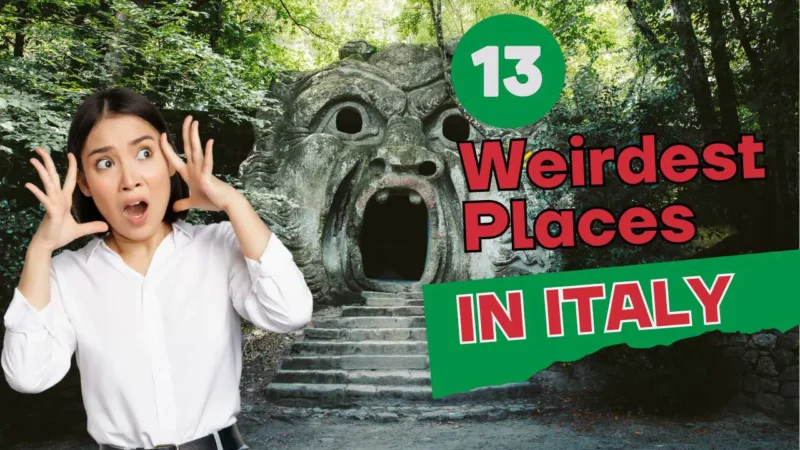
From eerie abandoned sites to natural wonders that defy explanation, our criteria weren’t just about being off-the-beaten-path but diving into the truly unique experiences Italy has to offer.
Italy is not just about the rolling hills of Tuscany, the historic ruins of Rome, or the artistic treasures of Florence. Beyond these well-trodden paths lies a world filled with oddities and marvels, waiting to be discovered by the curious traveler.
As we guide you through these weird and wonderful places, we invite you to embrace the unexpected and delve into the stories that make each destination uniquely fascinating. Let’s explore Italy through a different lens, where every stop is an adventure into the bizarre and the beautiful.
13 Weirdest Places To Visit In Italy
1. Valle dei Mulini (Valley of the Mills), Sorrento
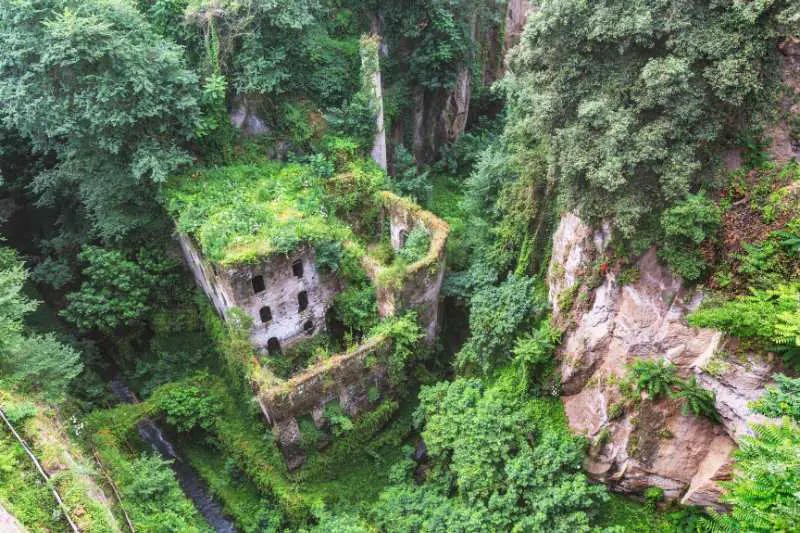
Nestled in the historic town of Sorrento, by Italy’s scenic Amalfi Coast, you’ll discover Valle dei Mulini, or Valley of the Mills. A sight both strange and spectacular awaits you here. Nature has reclaimed an area once bustling with wheat grinding mills, dating back to as early as the 13th century.
Over the years, the valley was abandoned, leaving behind a ghostly yet enchanting relic. The mills, buildings, and surrounding vegetation now create an almost surreal landscape. Moss and plants drape the structures, while a deep gorge frames this unique piece of history.
It’s this blend of natural beauty and historic decay that makes Valle dei Mulini an irresistible visit. It’s not just weird – it’s a testament to the power of nature over man-made creations. For travellers, it offers a perfect combination of a picturesque hike and a peek into a forgotten time that will be perfect for your Instagram feed.
The valley, thus, serves as a striking reminder of how quickly nature can reclaim its space, making it a fascinating pit stop for those exploring Italy’s wealth of sights.
2. Alberobello
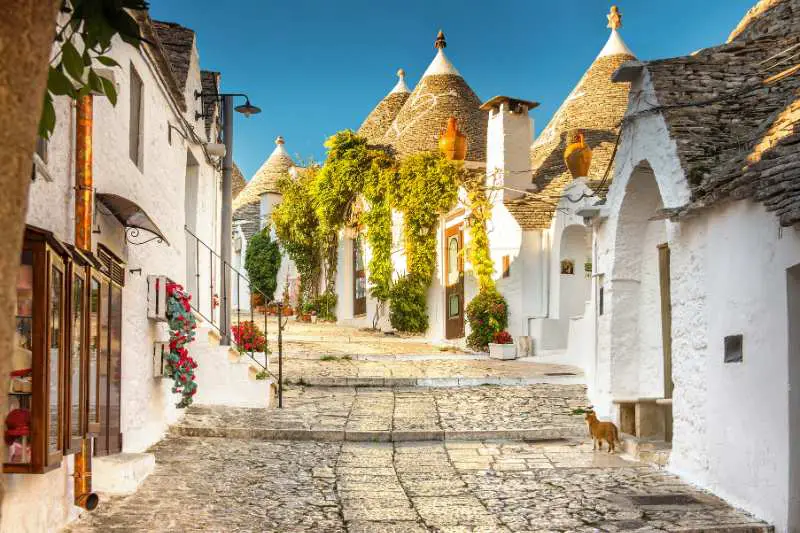
Alberobello, nestled in Italy’s Apulia region, is unlike any place you’ve visited. This town stands out for its trulli – unique, cone-roofed white houses made of limestone. A UNESCO World Heritage site, these peculiar structures give the town a fairytale-like appearance.
What makes it weird is not just the architecture but also the history behind these buildings. Constructed without mortar, supposedly to evade taxes in the 14th century, their design is as ingenious as it is quirky.
For travelers seeking the road less traveled, Alberobello offers a whimsical escape into a living history book. You’ll marvel at the charming streets, explore the craftsmanship of local artisans, and enjoy the town’s peaceful ambiance. It’s a blend of oddity, culture, and beauty, making it a must-visit for those looking to experience Italy’s weirder side.
3. Craco
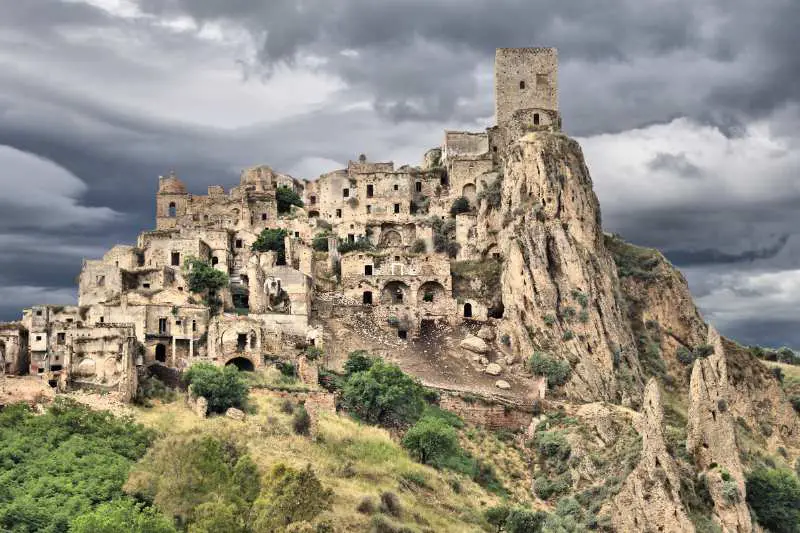
Nestled in the southern region of Basilicata, Italy, Craco stands as an eerie monument to the past. This abandoned medieval town invites the curious with its ghostly charm.
What makes Craco truly weird is its complete desolation. Once a bustling community, natural disasters and landslides in the 20th century left it deserted. Its empty streets and crumbling buildings paint a haunting picture of life interrupted.
Yet, it’s precisely this desolation that beckons travelers. Exploring Craco offers a unique glimpse into a frozen moment in time. It’s an extraordinary destination for those seeking beauty in abandonment and the stories of places left behind.
4. Park of the Monsters (Parco dei Mostri), Bomarzo
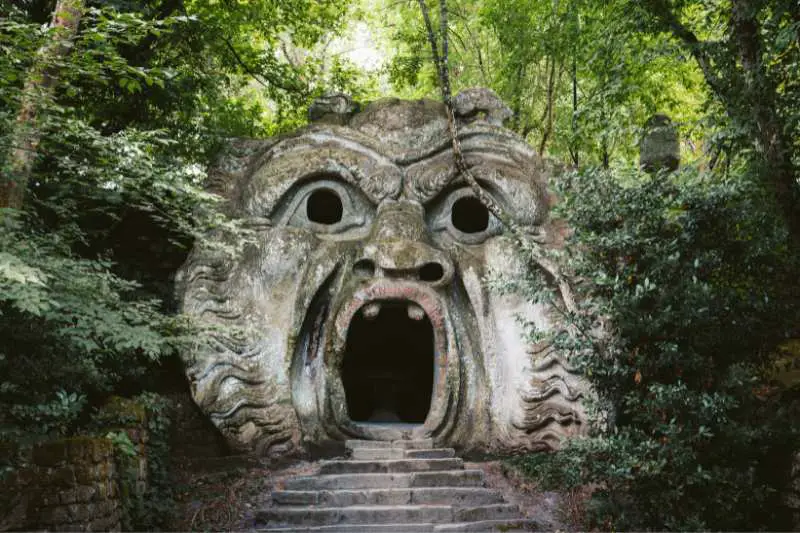
Located in Bomarzo, Italy, the Park of the Monsters (Parco dei Mostri) is an extraordinary sight. This peculiar sculpture garden, nestled in the Lazio region, is a journey into the fantastical and bizarre.
As you wander through this 16th-century park, you’ll encounter stone creatures and enigmatic figures towering above. Mythical beings and grotesque statues, from a warping ogre to a fierce dragon, create a surreal atmosphere that captivates the imagination.
What makes it so weird is its origin story—built to express grief and astonishment rather than to please or entertain. Yet, this is exactly why it’s a must-visit for travelers. It offers a unique glimpse into the human psyche, transforming personal despair into a landscape of wonder. A visit here is not just a walk; it’s an exploration of the strange, the unexpected, and the profoundly memorable.
5. Catacombs of the Capuchins, Palermo
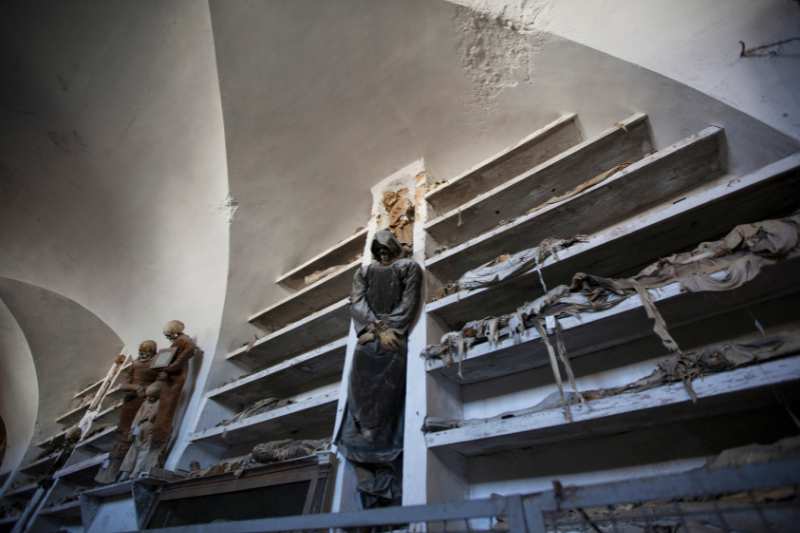
Tucked away in the city of Palermo on the island of Sicily lies one of Italy’s most unusual attractions: the Catacombs of the Capuchins. This extraordinary place holds the preserved remains of over 8,000 people, dating back to the 16th century.
As you wander through the dimly lit corridors, you’ll find yourself surrounded by mummified bodies. Dressed in their finest attire, they line the walls in a macabre display of eternal life. It’s not just the sight of these preserved figures that’s weird; it’s the intimate glimpse into the past that feels unsettling yet fascinating.
Why is it a must-visit for travelers? Beyond its eerie allure, the Catacombs offer a unique insight into the cultural and historical attitudes towards death and preservation in Sicily. It’s a place where the line between the living and the dead feels blurred, offering a truly unlike any other experience.
For those keen on exploring the peculiar corners of the world, the Catacombs of the Capuchins in Palermo provides an unforgettable journey into the heart of human history and mortality.
6. Phlegraean Fields (Campi Flegrei)
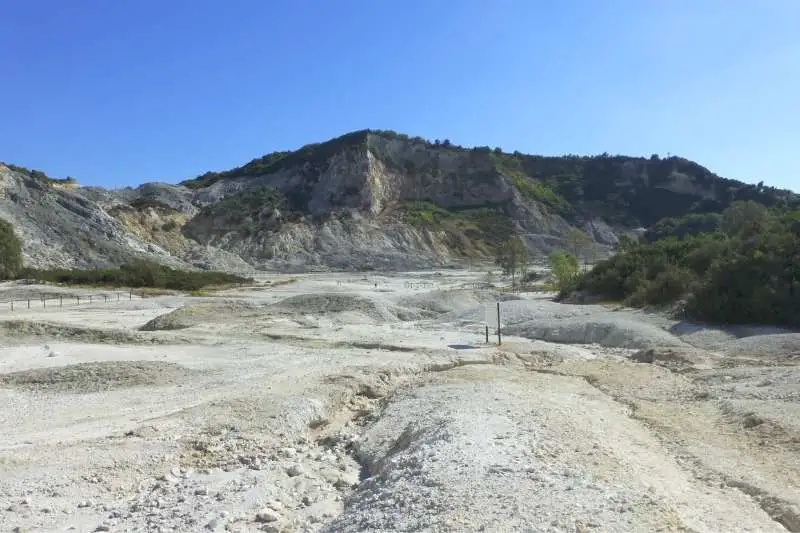
Nestled just west of Naples, the Phlegraean Fields (Campi Flegrei) beckon with an otherworldly allure. This vast volcanic area is a literal hotbed of geological wonders, where the ground itself breathes through fumaroles and mud pots, and ancient ruins share space with crater lakes.
What makes it weird is not just its turbulent volcanic nature but the fact that it is a supervolcano, with scientists closely monitoring it for any signs of awakening. The landscape feels almost apocalyptic, yet mesmerizing, blending natural beauty with the raw power of Earth.
For travelers seeking the path less trodden, Phlegraean Fields offer an unforgettable journey. Here, you can explore archaeological sites like the Flavian Amphitheater and the Temple of Serapis, witnessing firsthand the impact of volcanic activity on civilization.
It’s a place where history, science, and adventure converge, making it a fascinating destination for those intrigued by the power of nature and the echoes of the past. An ideal spot for the curious and the brave, offering a unique blend of beauty and mystery.
7. Tarot Garden (Il Giardino dei Tarocchi), Capalbio
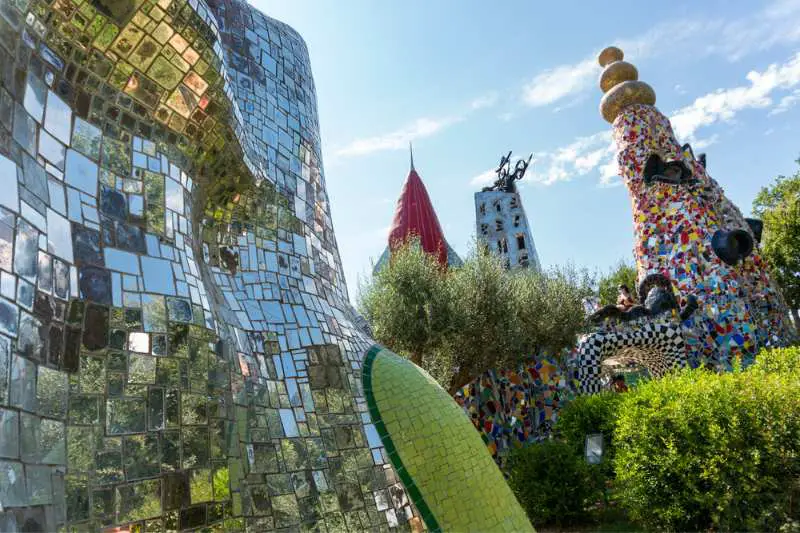
Tarot Garden (Il Giardino dei Tarocchi) in Capalbio, nestled in the Italian region of Tuscany, offers a truly unique destination to explore. Created by artist Niki de Saint Phalle, this enchanting park is a blend of art, fantasy, and whimsy, unlike anything you’ve seen before.
As you wander through the garden, you’ll encounter massive, vivid sculptures representing the major arcana of the tarot deck. Each piece is an explosion of colors, mosaic tiles, and mirrors, creating a fantastical landscape that’s both weird and wonderful.
What makes it so odd is the fusion of fine art with an almost playful, theme-park vibe, set in the unexpected tranquility of the Tuscan countryside. It is this eccentric mix that draws travelers seeking something out of the ordinary.
Visiting Tarot Garden offers not just a visual feast but a journey into the imagination of a visionary artist. It’s an ideal stop for those looking to step off the beaten path and into a world where art and magic converge.
8. Sunken City of Baia, Naples
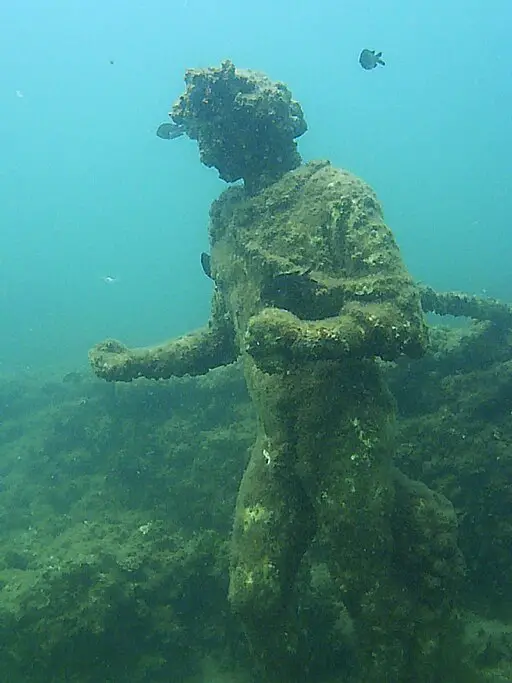
Nestled near Naples, the Sunken City of Baia is one of Italy’s most captivating mysteries. Once a thriving Roman spa retreat, it now lies submerged underwater, a ghostly reminder of nature’s power.
Imagine exploring ancient ruins without setting foot in a museum. That’s what you find here—an underwater Pompeii teeming with well-preserved statues, mosaics, and buildings. It’s weird because it’s not every day you get to swim through history.
Why visit? It’s an unparalleled adventure for travelers. Snorkeling or diving among these eerie ruins offers a unique blend of archeology and natural beauty. Perfect for those craving an out-of-the-ordinary experience, the Sunken City of Baia promises an unforgettable journey into the past.
9. Sword in the Stone at Montesiepi Chapel, Siena

Nestled in the picturesque Tuscan countryside near Siena, the Montesiepi Chapel harbors an astonishing sight: the Sword in the Stone. This enigmatic artifact is not just a fanciful legend but a tangible piece of history that you can witness firsthand.
What makes it particularly weird is its striking resemblance to the famous Arthurian legend, yet it is rooted in the story of Saint Galgano, who, in a moment of divine inspiration, plunged his sword into the stone, proving his commitment to a peaceful life.
For travelers seeking the unconventional, this site offers a unique blend of medieval history and myth. Unlike the crowded, mainstream attractions, the Montesiepi Chapel provides an intimate glimpse into Italy’s rich tapestry of stories and legends.
10. Garden of Ninfa, Latina
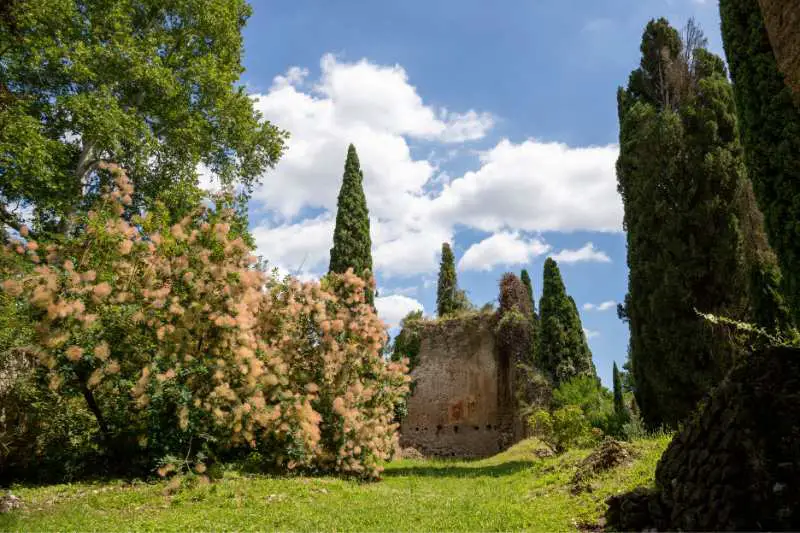
Nestled in the Latina province, not far from Rome, lies the enchanting Garden of Ninfa. This place is a surreal blend of history and nature, where medieval ruins intertwine with lush garden landscapes. What sets it apart is its otherworldly ambiance, making it a unique, almost fairy-tale visit in Italy.
You’ll find yourself wandering among ancient towers, stone walls, and remnants of churches, all enveloped in flowering plants and vibrant greenery. The weirdness comes from this striking juxtaposition—ruins serving as the foundation for a flourishing botanical garden. It’s as if you’ve stepped into a living painting where nature has reclaimed civilization.
For travelers seeking a blend of history, natural beauty, and an atmosphere straight out of a storybook, the Garden of Ninfa is an unmissable stop. Its tranquility and peculiar charm make it an ideal retreat from the hustle and bustle of typical tourist spots. Whether you’re a nature lover, history enthusiast, or simply in search of the unusual, Ninfa’s timeless appeal beckons.
11. Museum of the Holy Souls in Purgatory, Rome
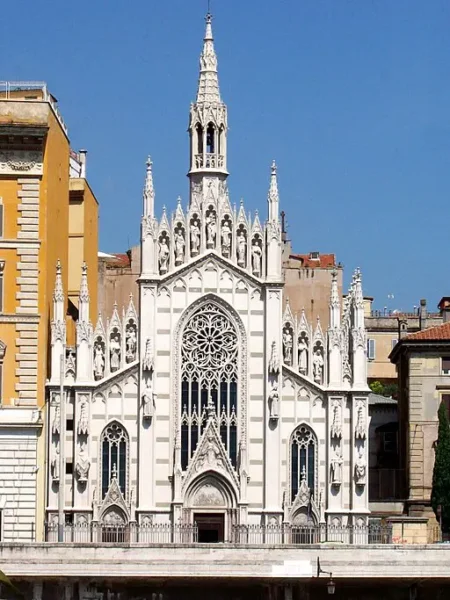
Tucked away inside the Church of the Sacred Heart of Suffrage in Rome, you’ll stumble upon the peculiar Museum of the Holy Souls in Purgatory. This little-known treasure is not your typical tourist spot.
Inside, you’re greeted by a collection that’s as eerie as it is fascinating. The museum houses items believed to bear the scorched handprints and marks of souls from purgatory, seeking prayers for their release. These supposed supernatural signs make it one of the weirdest places to visit.
It’s weird, yes, but captivating. It draws you into a world where the afterlife seems to reach out to the living. For travelers looking for something off the beaten path, this museum offers a unique glimpse into Catholic beliefs and the mysteries that surround them.
It’s a good place to go not just for its oddity, but for the chance to ponder the connection between life and the hereafter, in a setting you won’t find anywhere else. A visit here promises a memorable experience that blends history, religion, and the unexplainable.
12. Aosta Valley Megalithic Area
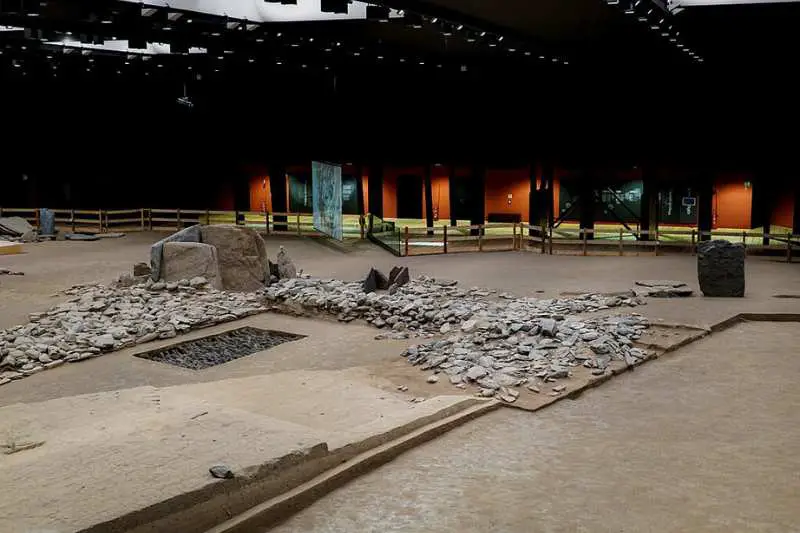
The Aosta Valley Megalithic Area in northwest Italy is a breathtakingly unique destination that beckons the curious traveler. Nestled in the shadow of the Alps, this site offers a mysterious glimpse into ancient times.
Here, you’re surrounded by enigmatic stone megaliths, remnants of prehistoric astronomical observatories. These ancient structures, aligned with celestial bodies, hint at a sophisticated understanding of the cosmos by people thousands of years ago.
Its weirdness lies in the silent, imposing presence of these stone giants, which contrast sharply with the serene beauty of the surrounding valley. They stand as puzzling relics of an era shrouded in mystery, inviting countless questions about their origins and purposes.
For travelers seeking the unusual, the Aosta Valley Megalithic Area offers a unique blend of natural beauty and ancient mysteries. It’s not just a visit; it’s a journey into the distant past, making it a compelling destination for those intrigued by history, archaeology, and the unexplained.
13. La Scarzuola, Montegabbione
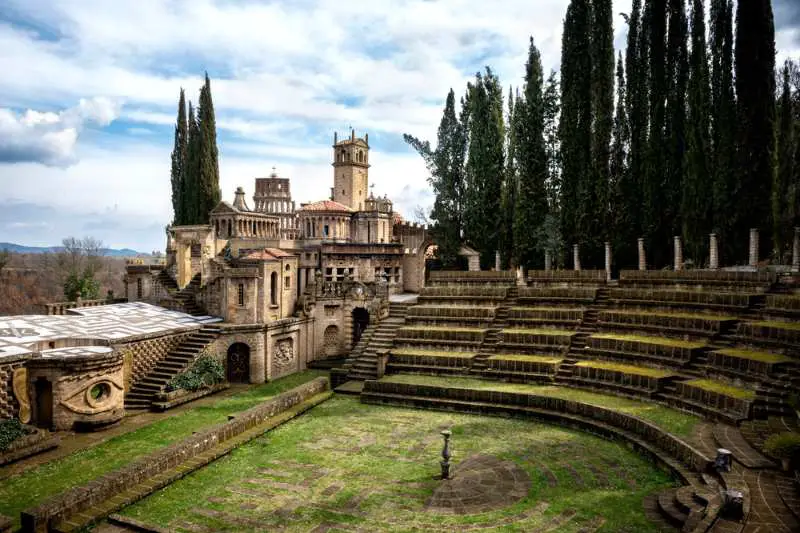
La Scarzuola, in Umbria, is a surreal architectural complex that truly earns its title as one of Italy’s weirdest places. Originally the site of a Franciscan monastery founded by Saint Francis of Assisi in 1218, it was purchased in the 1950s by architect Tomaso Buzzi who envisioned it as his “ideal city.”
The result is an esoteric mix of buildings that blend religious symbolism, mystical elements, and theatrical flair. Visitors can explore a series of bizarre structures, including an “Acropolis,” theaters, and a series of gardens and water features, all imbued with allegorical meanings and hidden references.
Walking through La Scarzuola gives the impression of stepping into a dream or an alternate reality, where the boundaries between the sacred, profane, and the purely imaginative seem to dissolve.
Italy, with its extraordinary blend of history, culture, and natural beauty, offers more than just the well-trodden paths of Venice’s canals, Rome’s ancient streets, and Florence’s art treasures. The 13 weirdest places you’ve discovered through this article not only attest to Italy’s rich and diverse heritage but also invite the most adventurous spirits to explore its lesser-known, yet equally fascinating, corners.
Embarking on a journey to these unusual destinations not only enriches one’s travel experience but also broadens one’s perspective on what Italy has to offer. Each of these weird and wonderful places holds a story, waiting to be discovered and told, making them not just stops on a map, but bookmarks in the grand narrative of adventure.
Whether you’re an intrepid explorer seeking the road less traveled or a curious traveler looking to expand your horizons, these weirdly wonderful destinations in Italy offer a rare glimpse into the unseen and unforgettable facets of one of the world’s most beloved countries.
Want to visit more fascinating places in Italy? Find our list of the most beautiful Old Towns in Italy here and most beautiful cities here. You can also find all our planning travel guides to Italy here.
